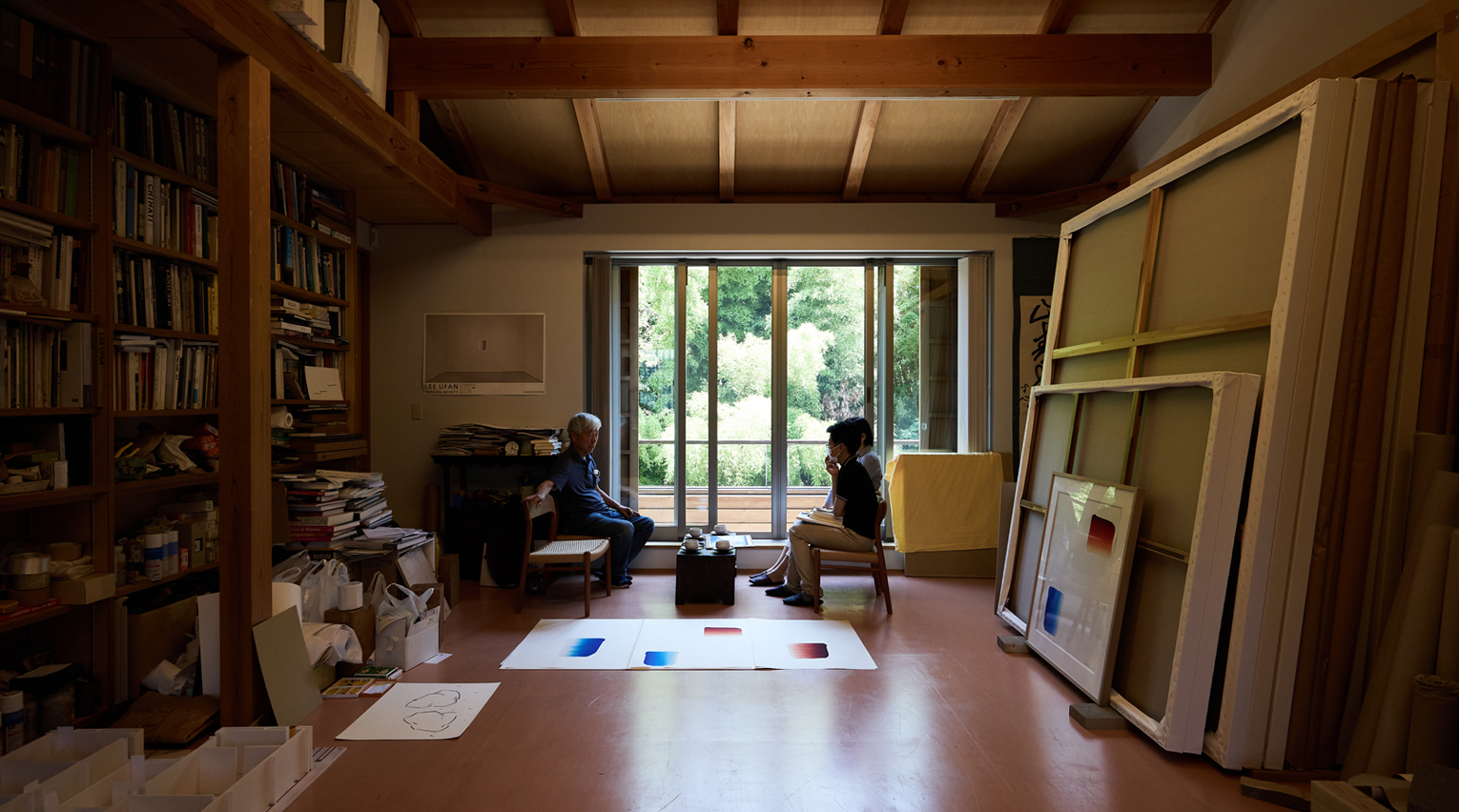
Interview with Lee Ufan “Dialogue Between Wood and Paper”
Lee Ufan is an artist who led one of the most important movements in post-war Japanese art, Mono-ha (the “School of Things”). He has gained worldwide acclaim for his works and writings that look at the relationship between things and things, and things and people. In the spring of 2022, the Lee Ufan Museum opened in Arles, France. And a large-scale retrospective exhibition was held at the National Art Center, Tokyo until November 7th and is now held at Hyogo prefectural museum of art through February 12, 2023. During these busy days, Mr. Lee Ufan worked on printmaking with craftsmen who inherited traditional woodcut printing techniques. We visited his atelier to talk about his new woodcut prints and the appeal of ukiyo-e prints.
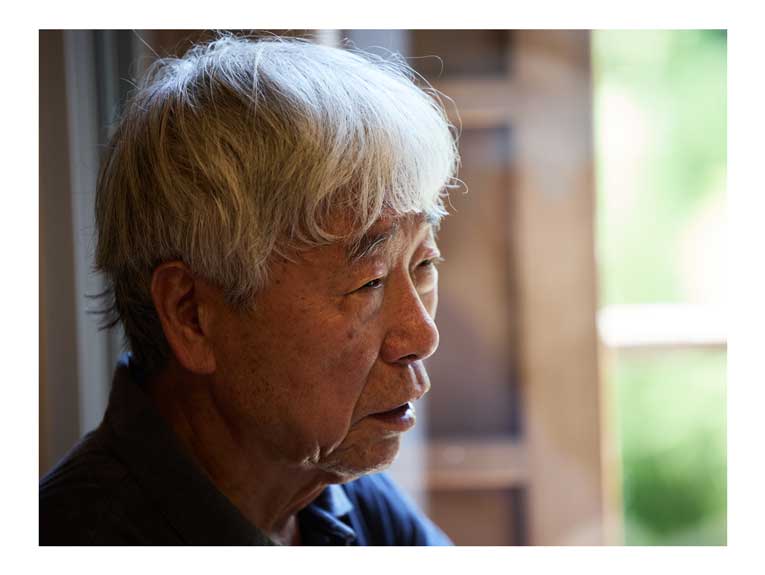 Lee Ufan was born in Gyeongsangnam-do, Korea, in 1936. He attended Seoul National University before moving to Japan in 1956 and studied philosophy at Nihon University College of Humanities. Lee is widely known as a leading figure in “Mono-ha” (the “School of Things”). In 1969, his article "From Object to Being" was selected for the Bijutsu Shuppan-sha Art Criticism Award. Major solo exhibitions in recent years include the Yokohama Museum of Art (Japan, 2005), the Guggenheim Museum (US, 2011), the Palace of Versailles (France, 2014), and Center Pompidou Metz (France, 2019). In 2010, the Lee Ufan Museum designed by architect Tadao Ando opened in Naoshima, Kagawa Prefecture. His major publications include “The Art of Encounter” (1971) and “The Art of Margins” (2002).
Lee Ufan was born in Gyeongsangnam-do, Korea, in 1936. He attended Seoul National University before moving to Japan in 1956 and studied philosophy at Nihon University College of Humanities. Lee is widely known as a leading figure in “Mono-ha” (the “School of Things”). In 1969, his article "From Object to Being" was selected for the Bijutsu Shuppan-sha Art Criticism Award. Major solo exhibitions in recent years include the Yokohama Museum of Art (Japan, 2005), the Guggenheim Museum (US, 2011), the Palace of Versailles (France, 2014), and Center Pompidou Metz (France, 2019). In 2010, the Lee Ufan Museum designed by architect Tadao Ando opened in Naoshima, Kagawa Prefecture. His major publications include “The Art of Encounter” (1971) and “The Art of Margins” (2002).Expressions Using Prints
——You have produced print works with various types of prints such as copperplate prints and lithographs. What kind of things are you trying to do with expressions with prints in contrast to expressions with the paintbrush?
“It was around the early 70's that I first presented works that were expressed using prints. I cut out a circle from a plywood board, put a lot of ink on it, and printed it on paper with a baren rubbing pad. I repeated moving the board and printing it on the paper and made a work that showed how the ink gradually thinned out. It looks like the wood grain of a plywood board has been copied onto paper, but I think it can be said that this is also a kind of woodcut print.
The tableau (*) series that I mainly worked on in the 1970s, "From Point" and "From Line," show the application of dense colors gradually thinning out. The idea of showing the passage of time on the picture plane is the same, but when this is expressed using a medium instead of a paintbrush, the state of matter and the mechanism of prints come to the fore rather than the artist's act. Perhaps I should say the importance of the medium becomes more prominent.
(*A single painting on canvas, paper, or board. A completed painting, not a rough sketch.)
In addition, although a woodcut print is essentially relief printing, I also applied ink to the concave surface without cleaning it all out and produced prints by copying onto paper the slight differences in height of the uneven surface created on the woodblock. This was exhibited at the International Biennial Exhibition of Prints in Tokyo and received an award.”
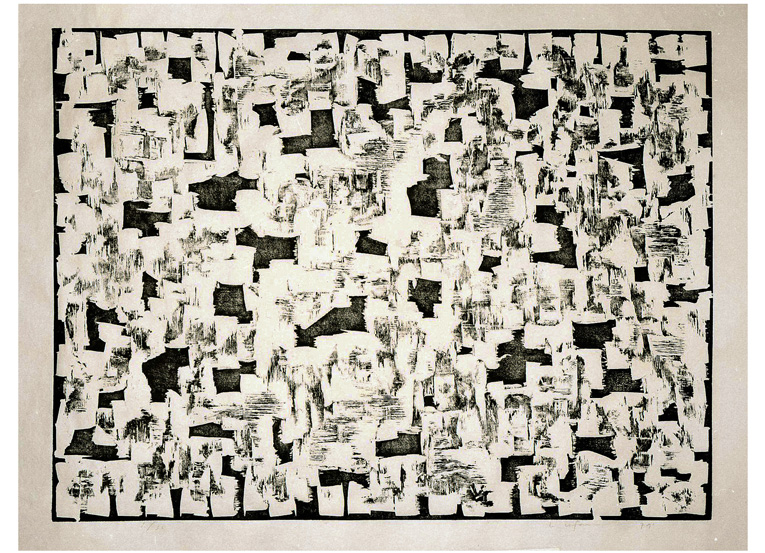
——Having created works with various types of prints, was there a type of print that was more suitable for your expression? Why did you decide to create woodcut prints in Japan at this time?
“Each type of print has its own appeal, and there is no such thing as which one is better. I believe that woodcut prints are prints in which the material of the woodblock itself and the pattern of the woodblock itself come alive. With lithographs and the like, the appearance and changes of the ink on the plate come out more than the properties of the material of the plate. Since silkscreen uses a mesh of holes, it is suitable for works with regular and artificial composition, but it’s not suitable for producing soft and subtle expressions.
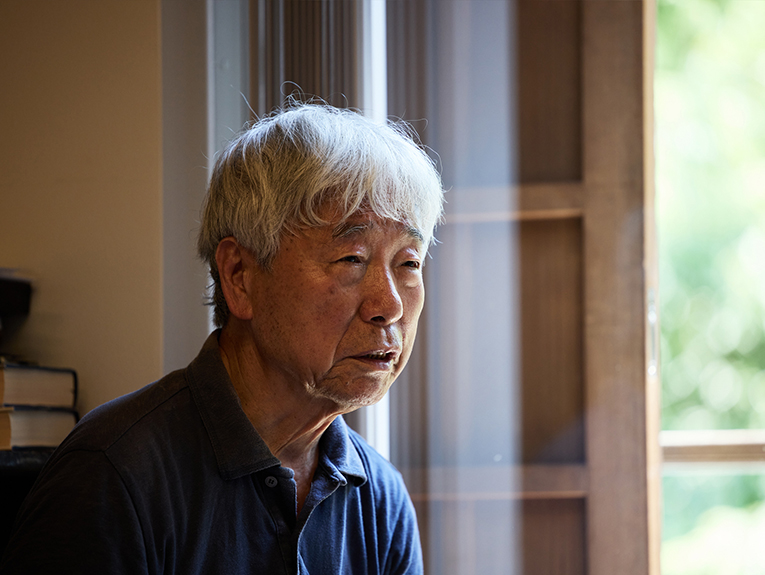
One of the major features of my recent paintings is the color gradation. Even in ukiyo-e prints, you can see vivid gradations, especially in the landscape paintings of Hokusai and Hiroshige. I thought that my work and Japanese woodcut prints, which can express rich color gradations, would be a good match.
In fact, I had tried to make woodcut prints several times with young printmakers and print studios, but they didn't turn out the way I thought they would. Around that time, Mr. Matsuyama from the editorial department of ‘HANGA GEIJUTSU (Print Art)’ introduced me to the Adachi Institute of Woodcut Prints, which uses traditional woodcut printing techniques to reproduce ukiyo-e prints and create works by contemporary artists.”
The Appeal of Ukiyo-e Prints
——You have been active on the world stage for many years, and you are well versed in art history from all over the world. With such a background, what aspects of ukiyo-e do you find interesting?
“I was born in South Korea, and while living in Japan for nearly 60 years, I have also expanded my activities in Europe and the United States. When you come into contact with the cultures of various countries and regions, you will find that Korean and Japanese cultures are very similar. The grammar is similar, and so is the cooking. However, compared to the culture of the peninsula, where the wind blows from many directions and various things are constantly coming and going, I think that the culture of Japan, an island country, is a culture that takes time to mature and ferment more and make the most of the materials. It is important to pay attention to both similarities and differences between cultures. They are rooted in their respective climates and histories.
Woodcut printing techniques have existed in China, Korea, and Japan since ancient times, mainly for the purpose of propagation. In Japan, however, the common people rose to prominence in the Edo period, and woodcut prints developed in a unique way. Historically, there have been mutual influences, but I think that the culture of ukiyo-e is very unique to Japan.
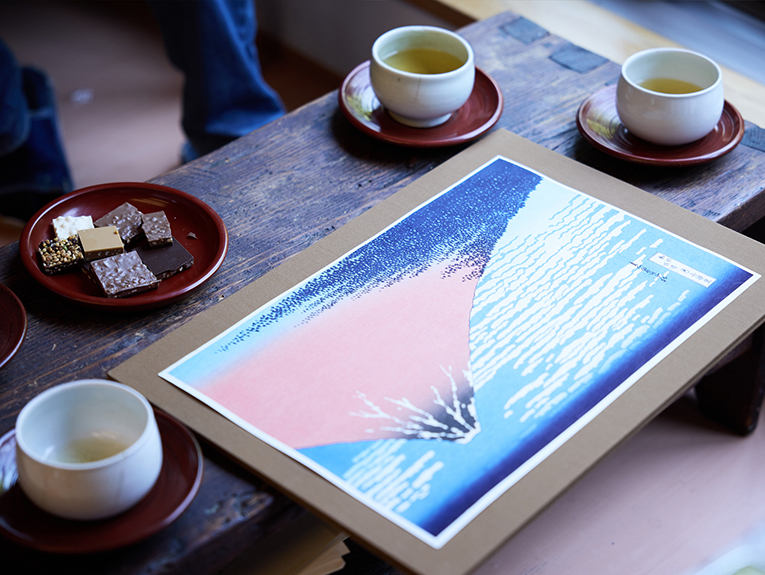
The development of printmaking techniques means that there was a great demand for paintings. Japanese and Koreans are similar in that they feel a sense of security when they have the same things as everyone else. It creates a kind of communal illusion that everyone is sharing the same things. This is very interesting.
However, I cannot agree with the idea that printmaking technology developed solely for the purpose of mass production. From the artist's point of view, I think that each time a print is made, the creator thinks, ‘Let's make it even better than the previous one’ or ‘How about doing it this way next time?’ Therefore, even if you print the same woodblock, there will be subtle differences. Strictly speaking, no two pieces are the same. The will of a creator to improve produces differences even in repetition, creating a unique culture. I think this is a wonderful thing.”
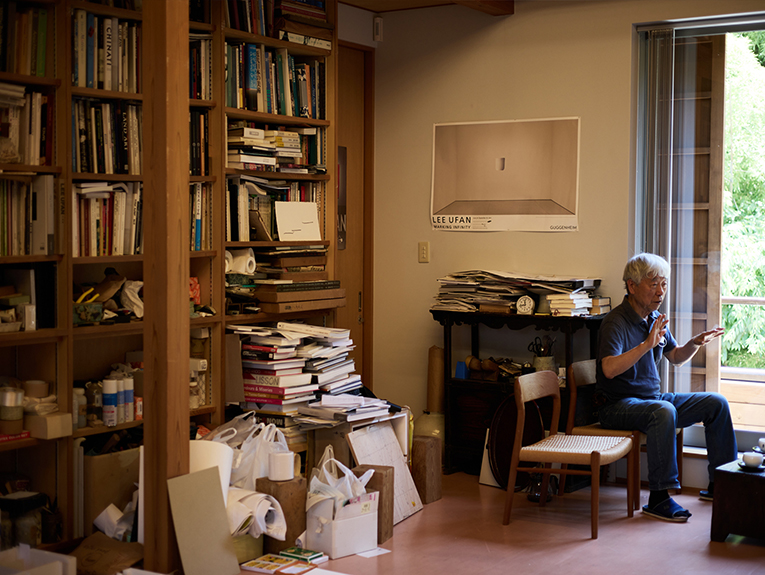
——Earlier, you mentioned the names of Hokusai and Hiroshige. How do you view their works?
“In the case of Hokusai, I find his prints overwhelmingly more interesting. Hokusai's original paintings are very good, but I don't find them interesting. His superior skills are at the forefront, and something is missing. They are brilliant and dynamic, but I feel that many of the works lack a certain atmosphere.
In the case of prints, not only the artist, but also the people who make the paper, carve the block, and print the block are involved in the work. The reactions and counteractions that occur in that process appear on the work in a multi-layered manner.
Many of Hokusai's representative ukiyo-e prints are probably not completed exactly as they were originally drawn by Hokusai. In addition to intentional changes and corrections by publishers, small deviations and fluctuations must have occurred at each stage of each artisan's work. And so, Hokusai's prints are definitely Hokusai's works, but they are not pure Hokusai. I think that by overlapping and multiplying various elements other than Hokusai, the picture becomes intensely powerful.
Of course, the multi-layered nature comes alive because the picture was drawn by a rare artist named Hokusai, and it is not enough just to add many elements. The characteristics of each element are important.”
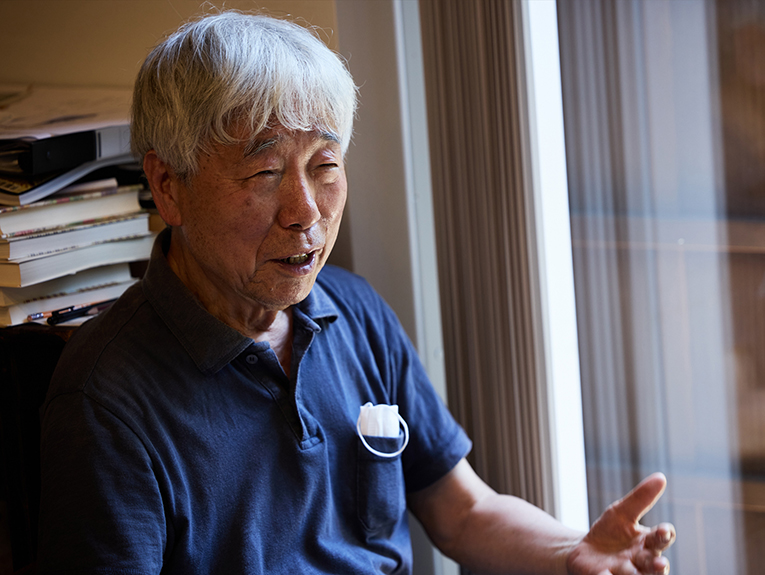
——Could you tell us more about the characteristics of ukiyo-e prints in your opinion?
“In the case of ukiyo-e, the materials and techniques of woodcut prints play an important role in the expression. Naturally, one of the reasons why ukiyo-e was created using woodcut printing was that it was a material that was easy to obtain and handle. However, the paper craftsmen, artists, carvers, and printers all carefully examined the qualities of wood, such as its texture, warmth, and flexibility, and devised their own methods, and I think the result of that is reflected in the work.
Many Western European painters such as Van Gogh and Manet were fascinated by ukiyo-e and incorporated ukiyo-e motifs into their oil paintings, but they haven't been able to incorporate the appeal and wonder of woodcuts into their work. That is because woodcut prints have an appeal that cannot be replaced by any other medium. Even if you don't know that ukiyo-e is a woodcut print or how it's made, the power and lightness of it always strikes the viewer's eye.
The lines and boundaries created from the edge of the carver’s knife seen in ukiyo-e prints are very powerful. The effect cannot be achieved with brush strokes. In the first printings of Hokusai's ‘Red Fuji,’ the grain of the woodblock appears beautifully on the red surface of the mountain. This is also an effect unique to woodblocks and cannot be achieved with other materials.
In most ukiyo-e prints, the more times the prints are produced, the more the woodblock wears out, and the color of the paint becomes darker and loses transparency. In particular, Hiroshige's prints, which were popular at the time, have been reprinted many times by various printers. Therefore, even if they were printed with the same woodblocks, the impression will be completely different for each print. But that is also what makes ukiyo-e prints so interesting.”
What happens in the “Room for Others to Enter”
——The woodcut printing technique that supported the ukiyo-e culture of the Edo period has been passed down to the present day, but there is a serious problem of successors. Under such circumstances, the next generation of carvers and printers in their 30s and 40s worked on the production of your woodcut prints. I heard that the printer, Shoko Kishi, had many meetings with you until the work was completed. What kind of interactions did you have with her?
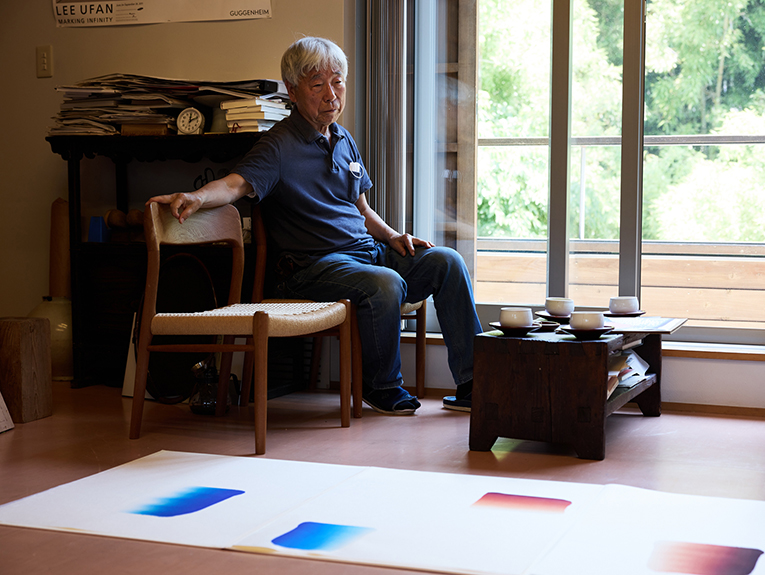
“I was astonished to hear that Ms. Kishi had to print the colors nearly 20 times to bring out the colors in my work. But I see that the layers of color that are created through that process are gentle and subtle, but powerful. Perhaps you could say the visual image has a strong sense of presence. I think that is something that appears when you print over and over again with extremely thin and light tones. Being able to confirm this was an interesting experience for me as well.
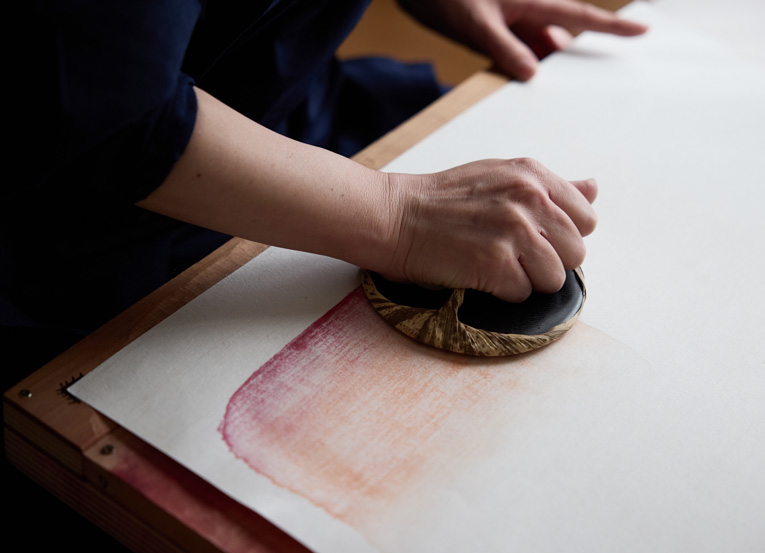
My tableaus look like they were drawn with a single stroke, but in fact I have layered it several times. However, simply layering paint on top of each other does not create a work of art. Each stroke must be solid. In the same way, even if a woodcut print is printed 20 times, I don't think the intensity of the work will come out unless the colors on each layer clash with each other but function together at the same time. I think that this woodcut print is powerful and has a sense of tension, but it is also a work that makes the most of the unique tenderness of woodcut prints.
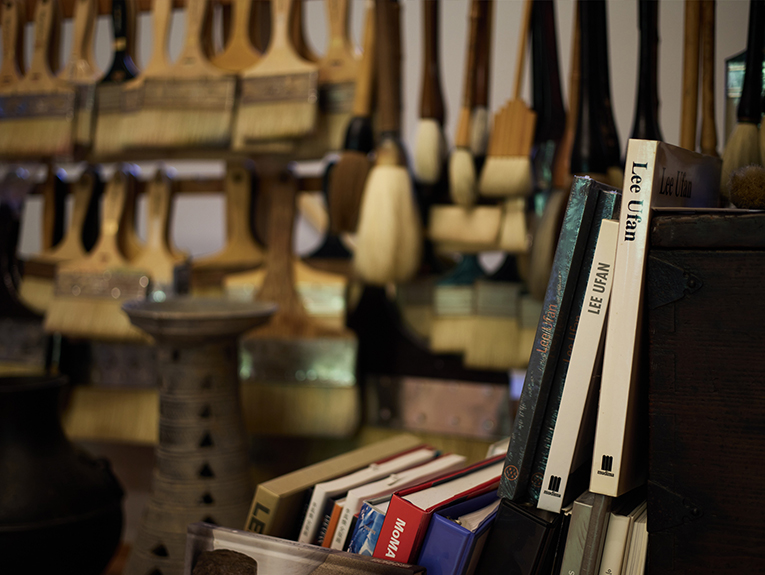
For this woodcut print production, I presented my painting as the original artwork, but a picture I painted with brushes will not be exactly the same as prints. And so, every time I saw the test prints that came in from the Adachi Institute of Woodcut Prints, I started thinking, ‘I want to do this a little more,’ or ‘How about doing that?’
The instructions I gave to Ms. Kishi were extremely simple, such as ‘Make this part a little darker.’ But Ms. Kishi tried to match the colors of the original painting while carefully confirming the image in my mind each time. I think she was trying to find out from my words whether there was still something more I wanted to do.
I think it's an unspoken understanding that a printer's job is to do accurate and consistent work. However, I have a desire for something to happen in the interaction with the material and in the dialogue between people, amid the deviations and fluctuations that arise from feeling and thinking, ‘Perhaps we can make it better if we do it this way.’ Such happenings are also present in the production of original paintings, but in the case of prints there is more room for others to enter and feeling one’s way through the process.”
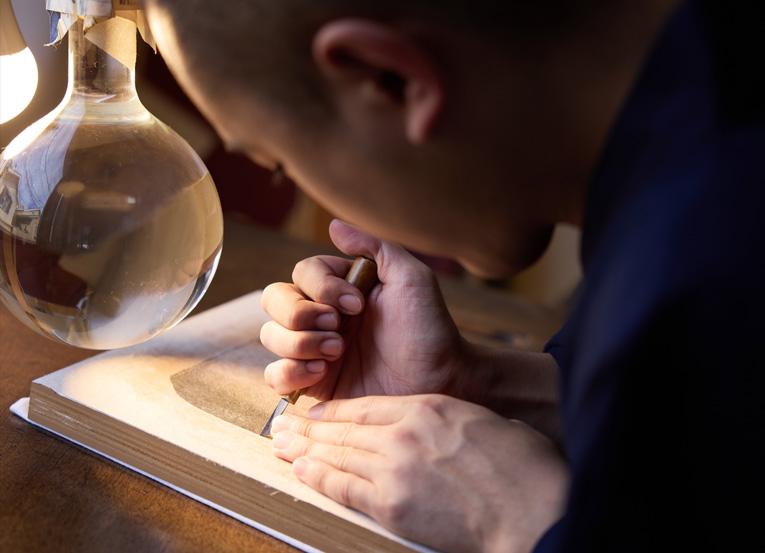
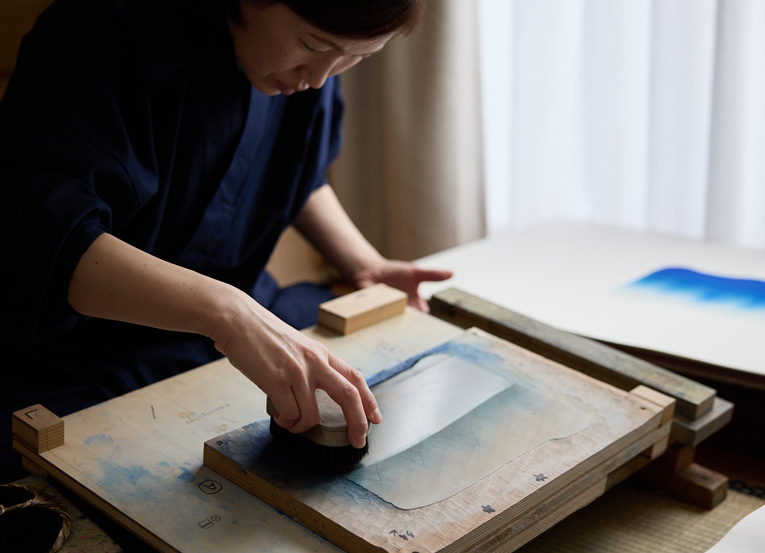
The Age of Prints
——Listening to you today, I was once again reminded of the possibilities and appeal of printmaking. I think that prints are truly interesting, including their history, but in general, I don't think there are many opportunities for us to come into contact with prints in our daily lives. How do you feel about this?
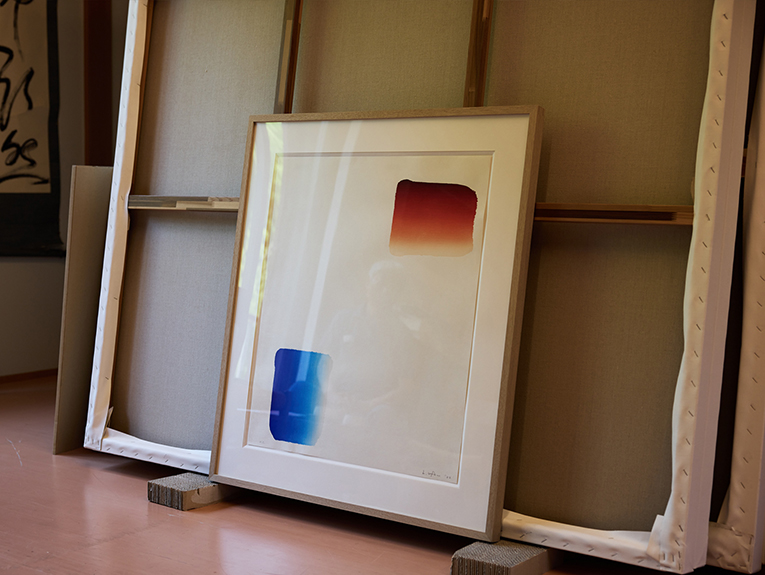
“I think this is because many people do not perceive printmaking as a form of expression, but rather as a technique for reproduction. This is the same not only in Japan but also overseas, and people tend to value single oil paintings more than multiple prints. But in fact, prints have a unique presence and character that cannot be expressed in painting.
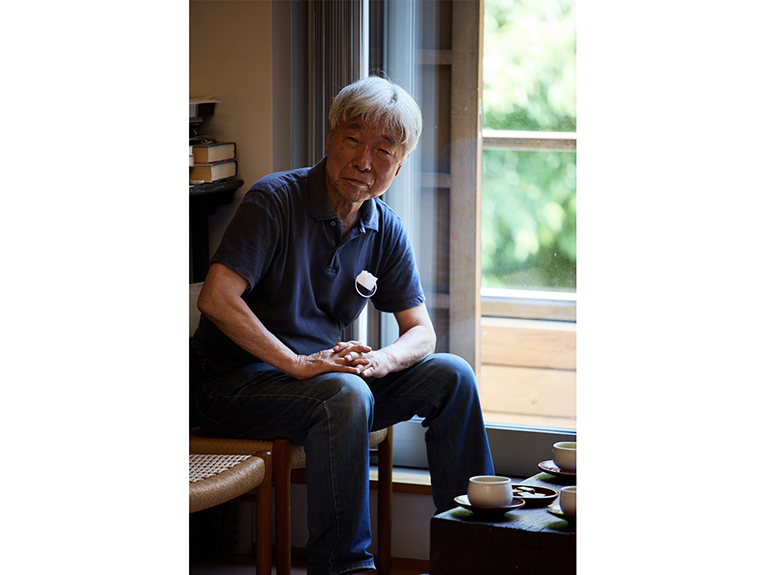
Actually, I think that the age of prints is coming. In this day and age, things that are too direct or have a strong presence tend to be annoying for people. Whether it's an oil painting or a watercolor painting, people today want to distance themselves a little bit from anything that looks like it's an original, especially when it's something they have in their home.
I think that the current social situation is having an impact, and I think that the changes in living spaces are also significant. In old houses, the boundaries between the outdoors and indoors were more gradual, and there was plenty of space. Now, things are crowded together in a small apartment complex, and it's very stifling. In such a situation, it's hard when something harsh or graphic is right in front of you. I think something like a print that has been expressed through a printing medium feels just right in that situation.”
—— I believe that your new work will be an opportunity for many people to recognize the unique appeal of print expressions. Thank you for speaking with us today.
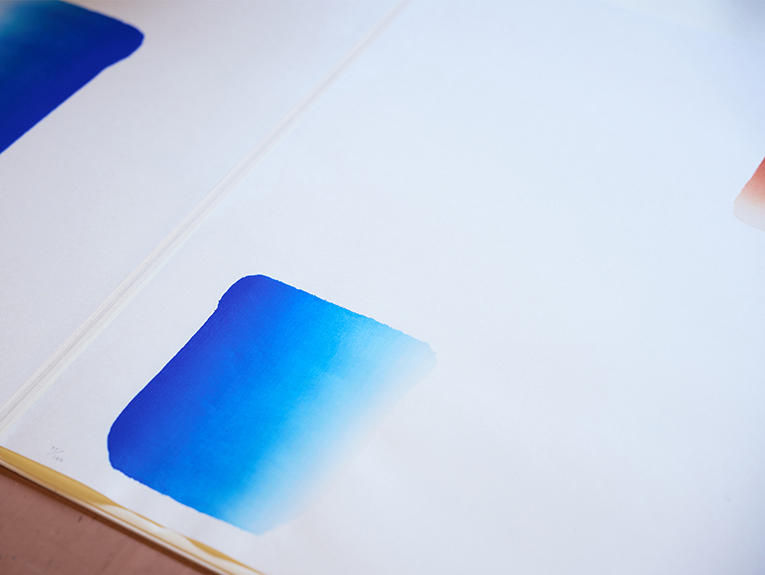
"Dialogue 1""Dialogue 2""Dialogue 3"
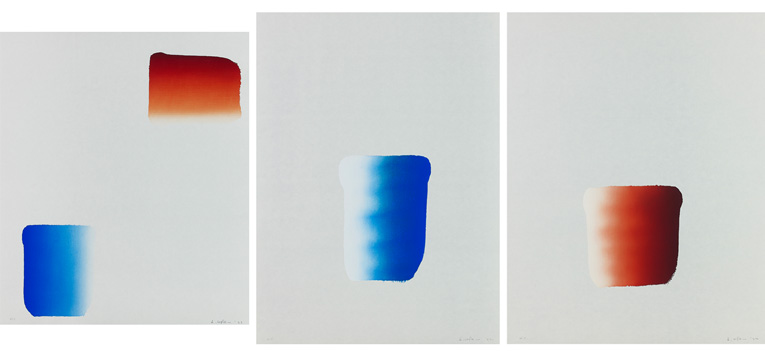
Limited Edition: 120
Size: Dialogue 1 67.0×57.0cm / Dialogue 2, Dialogue 3 76.0×56.0cm
Paper used: Echizen Kizuki Hosho Washi made by living national treasure, Ichibei Iwano
Year of production: 2022
Supervised by The Adachi Foundation for the Preservation of Woodcut Printing
Produced by The Adachi Institute of Woodcut Prints [Carver: Chikura Kishi / Printer: Shoko Kishi]
※Three new prints will be displayed at the showroom of the Adachi Foundation (Mejiro, TOKYO) from January 17th, 2023 through February 4th, 2023. Please visit our showroom during this period.
Text: Mirai MatsuzakiTranslation: Mari Hoshino Photos: Shin Inaba
- 記事をシェア:
- Tweet


